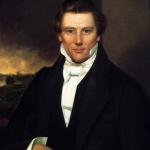A Bodhisattva is one who strives to attain enlightenment.
Bodhisattva is a sanskrit word that means “Enlightenment Being.” It has multiple definitions:
Bodhisattva:
- an enlightened person
- one who is on the path to enlightenment
- one who enlightens others.
Mahayana Buddhism rests entirely on the Bodhisattva ideal. We have innate wakefulness—we are enlightened already—but we are also on the path to realizing the fact that we are awakened and our true nature is not separate from bringing others to awakening along with us. Helping others is helping ourselves and helping ourselves is realizing what has always been true.
This text “the 37 practices of a Bodhisattva” is a concise text written by a Tibetan teacher in the 14th century named Togme Zangpo who was a member of the Sakya lineage. It’s a summary of how we should behave as we are on the path to awakening. It’s a Tibetan Mahayana teaching. Togme Zangpo describes 37 practices we should adopt on the Bodhisattva path.
Even if we don’t have the lofty goal of being Bodhisattvas, these teachings can still help us deal with the ordinary problems in our lives. We can learn to handle our lives better by following these methods.
Togme Zangpo is well respected as a scholar in the Tibetan lineages. His parents died when he was a child and he entered monastery living at the age of 9. Not much is known about him, but he studied and practiced for decades and decades and is considered an important figure in the history of Tibetan Buddhism and he’s known for deeply studying the Way of the Bodhisattva and Lamrim teachings.
Togme Zangpo was thought of as a Bodhisattva and his teachings are studied by all the various lineages in Tibetan Buddhism.
He was a specialist in the Bodhisattva path.
This work, the 37 practices is one that means a lot to me. I hope you like it too.
I’m using several different versions for this project, but primarily Ken Mcleod’s translation, which can be found here:
I’m going to present the introductory verses here.
Homage to Lokesvaraya
You who see that experience has no coming or going,
Yet pour your energy solely into helping beings,
My excellent teachers and Lord All Seeing,
I humbly and constantly honor with my body, speech, and mind.The fully awake, the buddhas, source of joy and well-being,
All come from integrating the noble Way.
Because integration depends on your knowing how to practice,
I will explain the practice of all bodhisattvas.
Lokesvaraya is another name for Avalokiteshvara, the Bodhisattva of compassion. In referencing him, the text is declaring that this is a teaching based cultivating compassion.
Zangpo starts by sublimating our egos by paying homage to teachers and Bodhisattvas. And he has described integration of the dharma as the goal of our practice.
Through the teachings of the Buddha and Bodhisattvas we gain the benefits of instruction on entering the path.
It starts with humility and compassion, as many Mahayana texts do. I hope you’ll enjoy exploring it with me.
Next: Keep Awareness Clear and Vivid
———————————————————————-
![]()
Daniel Scharpenburg is a meditation instructor and dharma teacher in Kansas City. He regularly gives teachings through the Open Heart Project, the largest virtual mindfulness community in the world. Find out more about Daniel on his website and connect with him on Facebook.
————————————————————————————
You can support independent Buddhist writing by joining a community of fellow learners/practitioners at Patreon












